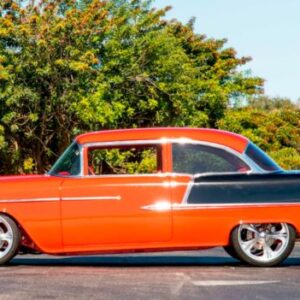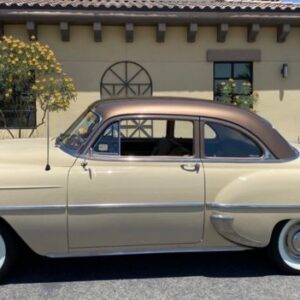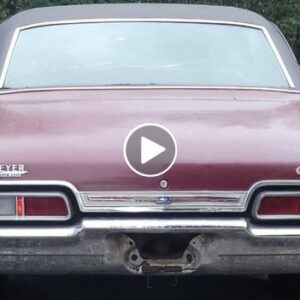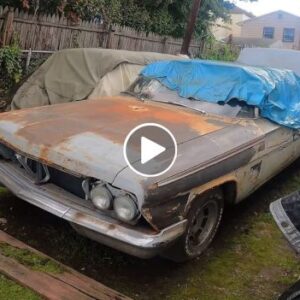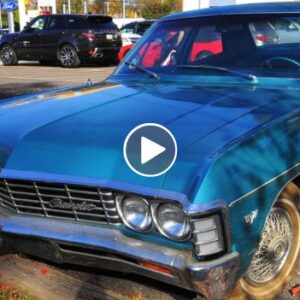The Bond Bug was a small, three-wheeled car produced by the British manufacturer Bond Cars Ltd. between 1970 and 1974. The Bond Bug is remembered as a unique and unconventional vehicle from the 1970s, showcasing a bold design and capturing the spirit of the era.
-1686213767.jpg)
1. Cultural Value
Iconic Design
The Bond Bug’s distinctive and eye-catching design made it an icon of 1970s automotive styling. Its wedge-shaped body and canopy-style roof represented the futuristic and experimental design trends of the era. The Bug’s unconventional appearance made it stand out on the roads and became a symbol of individuality and nonconformity.
-1686213806.jpg)
Youth Culture and Fashion
The Bond Bug was specifically marketed towards a young and trendy audience. It embodied the spirit of the youth culture of the 1970s, which embraced unconventional and bold styles. The vibrant colors offered for the Bug, such as bright orange and lime green, aligned with the fashion trends of the time and added to its appeal among the younger generation.
-1686213820.jpg)
Pop Culture References
The Bond Bug made appearances in various forms of popular culture, further contributing to its cultural value. It was featured in movies, TV shows, and music videos, often representing the eccentric and carefree lifestyle of the characters.
Countercultural Symbol
The Bond Bug can be seen as a symbol of the countercultural movements of the 1970s. With its unconventional design and alternative approach to transportation, it appealed to those seeking alternatives to traditional cars. The Bug’s three-wheeled configuration and compact size challenged the norms of the automotive industry and represented a departure from mainstream transportation choices.
-1686213843.jpg)
Collector’s Item and Classic Car Status
Over time, the Bond Bug has gained a following among classic car enthusiasts and collectors. Its limited production numbers and unique design have contributed to its desirability as a collectible vehicle.
-1686213858x1024.jpg)
2. Design
The design of the 1970-1974 Bond Bug was distinctive and unconventional for its time. Wedge-shaped Body: The Bond Bug had a wedge-shaped body that sloped downward from the front to the rear. This design was inspired by futuristic concepts prevalent in the 1970s, giving the car a sleek and aerodynamic appearance. The low front end and raised rear end added to its unique profile.
-1686213891.jpg)
Canopy-style Roof
One of the most notable design elements of the Bond Bug was its canopy-style roof. The entire top section of the car, including the windshield, hinged upward, creating a large opening for access to the cabin. This design resembled a fighter jet cockpit and added to the Bug’s distinctiveness.
-1686213924.jpg)
Three-wheel Configuration
The Bond Bug featured a three-wheel configuration, with a single wheel at the front and two wheels at the back. The front wheel was responsible for steering, while the rear wheels provided propulsion. This layout allowed for a compact and narrow design, making the Bug agile and maneuverable.
-1686213942.jpg)
Fiberglass Body
The Bond Bug’s body was made of fiberglass, a lightweight and durable material. Fiberglass allowed for greater design flexibility and contributed to the car’s overall weight reduction. It also made the Bug resistant to rust and corrosion, common issues in traditional steel-bodied cars.
-1686213954.jpg)
Vibrant Colors
The Bond Bug was available in a range of bright and vibrant colors. The color options included eye-catching shades such as bright orange, lime green, tangerine, and yellow. These bold color choices added to the car’s visual impact and aligned with the fashion trends of the time.
-1686213908.jpg)
Compact Dimensions
The Bond Bug was a small and compact vehicle, measuring about 2.9 meters (9.5 feet) in length. Its compact size made it ideal for urban driving and maneuvering through tight spaces. The Bug’s small footprint also contributed to its quirky and distinctive appeal.
-1686213969.jpg)
3. Engine
Engine Source
The Bond Bug initially used a 700cc four-cylinder engine sourced from the Reliant Robin, another three-wheeled vehicle produced by Reliant Motor Company. The Reliant engine was adapted for use in the Bond Bug.
-1686213981.jpg)
Power Output
The 700cc engine in the early Bond Bugs produced approximately 29 horsepower. This power output was relatively modest, reflecting the Bug’s focus on urban and leisure driving rather than high-performance capabilities.
-1686213996.jpg)
Later Engine Update
In 1972, the Bond Bug received an engine upgrade. The 750cc version of the Reliant engine was introduced, providing a slight increase in power compared to the earlier 700cc version. The exact power output of the 750cc engine is not readily available, but it is likely to be similar to the earlier version.
Rear-Mounted Configuration
The engine in the Bond Bug was located at the rear of the vehicle, behind the passenger compartment. This configuration allowed for a compact design and better weight distribution. The rear-mounted engine powered the rear wheels of the Bug.
4. Performance
Top Speed
The Bond Bug had a top speed of approximately 75 mph (120 km/h). This speed was achieved with the 700cc engine in the early models as well as the later 750cc engine.
-1686214058x1024.jpg)
Acceleration
The Bond Bug had a 0-60 mph (0-97 km/h) acceleration time of around 14 seconds. While not quick by today’s standards, it was in line with the performance of other small cars of its era.
Handling and Maneuverability
Thanks to its compact size and three-wheel configuration, the Bond Bug offered good maneuverability and handling. Its narrow width and lightweight construction made it agile and well-suited for urban driving and navigating through tight spaces.
Fuel Efficiency
The Bond Bug was designed to be fuel-efficient, catering to the needs of urban and leisure drivers. While specific fuel consumption figures may vary, it is generally known for its frugal fuel consumption, allowing for cost-effective and economical driving.
-1686214095.jpg)

